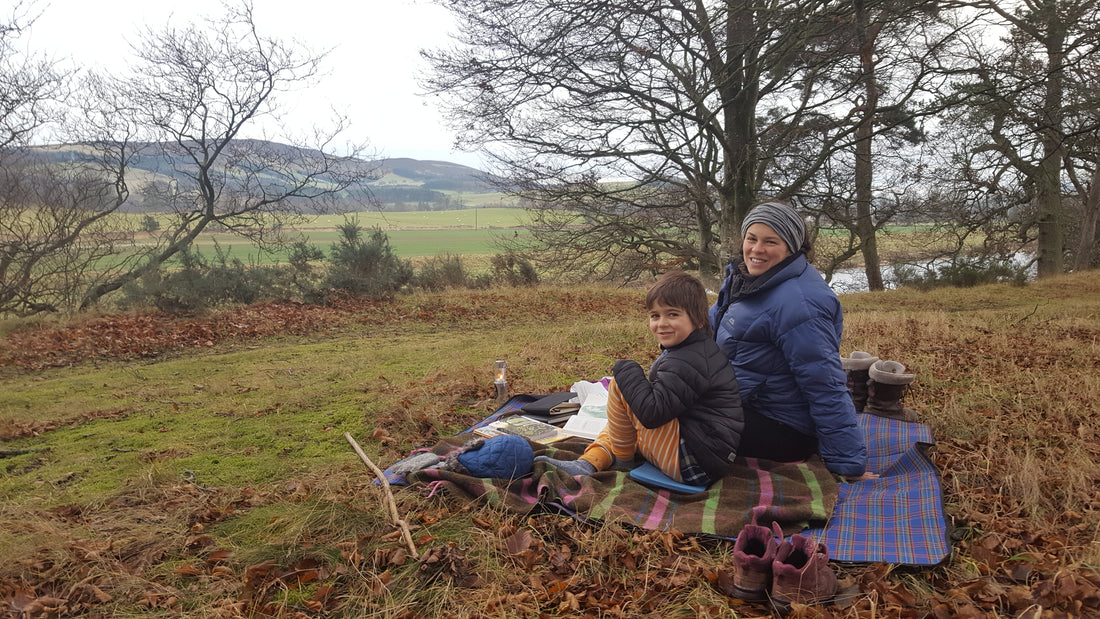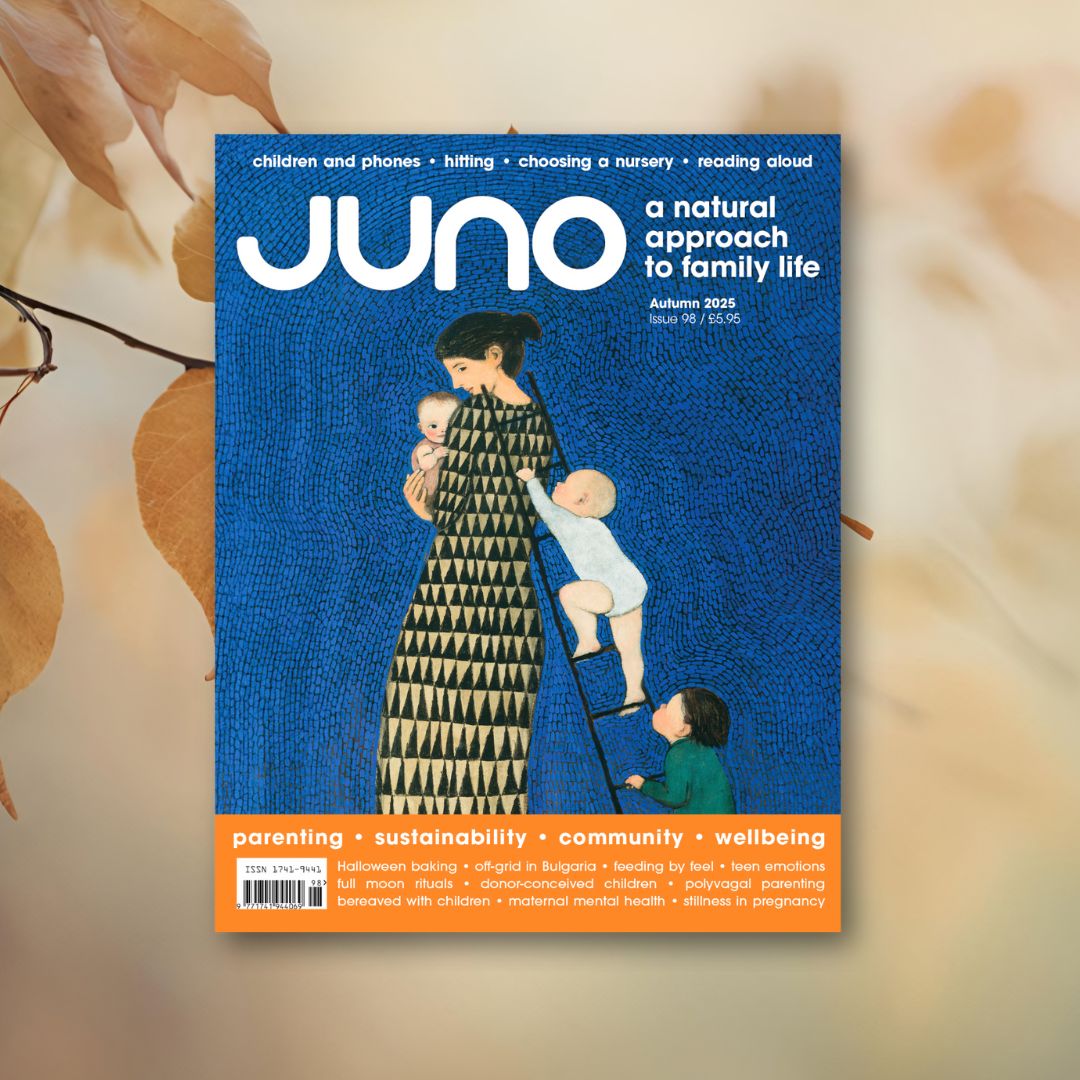I am sure I am not alone when I speak of a feeling of disconnection and lack of belonging and a corresponding yearning to find rootedness and meaning within my community, place and wider world.
In my early years I was moved around England and Wales. I relocated to Scotland as a young adult, first to Edinburgh, and later to the Isle of Skye, where I sought to ground myself once more in a community and somewhat failed. But I failed because I didn’t understand the cause of my feeling of separateness.
Since becoming a mother and striving once more for a sense of belonging, to grow roots together with my son, I am discovering anew what it means to be connected. That I am part of a wider network of not just humans, but also animals, rivers, trees, plants and rocks. That it’s not a matter of where I am, but how I am within that place. And in doing so I am discovering a calmness and acceptance within myself that I do belong, not just to this place, but also to the wider, animate Earth.
We moved to our current location in rural southern Scotland when my son turned 2 years of age. It was not somewhere I felt particularly drawn to – I am a lover of coasts and islands and now I find myself landlocked – but we rent our home and came to it without any commitment to staying here longterm, and our decision to move here was based on practical considerations rather than a sense of deep belonging. I struggled at first to find a like-minded community of people (and still often feel like I don’t belong here), and for a while I considered moving back to the place we’d left. But around that time I started a practice with my son that gradually, subtly began to root me to this place through the landscape and the wildlife.
In this practice, which is loosely based upon the idea of a ‘sit spot’, a special place that you visit regularly to notice and connect with the flow of life around you, I began to visit a place close to home with my son, a quiet stretch of riverside pathway with a steep bank of trees and a small stony beach that is revealed when the river level is low. I began referring to it as our ‘nature spot’, and we visited as often as we could, through all seasons and weathers, at times of celebration and as a calm, neutral place to escape to when tempers escalated at home.
We began noticing and naming the landforms and individual trees we passed on our journey to our nature spot and reflected on their characteristics: the ‘Big Beech’ – a beautiful ancient beech tree that we shelter beneath in inclement weather; ‘Disappointment Wood’ – a small copse named by my son after we spent an afternoon there trying and failing to light a fire for our Kelly Kettle with damp kindling; a particular rowan tree that we ‘adopted’ for a year, festooning it with edible gifts for the birds at Christmas; the plants we could safely forage and eat. Then we began to notice the wildlife that inhabited that place and that we saw repeatedly. There was the heron we startled nearly every day one winter, two hares we frequently observe playing in the field on the far side of the river, the swallows that return dancing and gliding over the water each summer, the blackbird we recognise by the tiny patch of grey beneath its right eye, which approaches us for a ‘chat’, and the elusive kingfisher that we know frequents this stretch of river but has only rarely revealed itself to us.
Unconsciously we have deepened our practice, becoming participants in our place as well as passive observers, greeting and embracing the trees as we wander past, addressing out loud the wildlife we come across, and humming or singing to the birds, as well as lengthening the time we spend at our nature spot in silent observation and reflection. We also return to our spot to engage with it in our own ceremonial ways at special times of the year: watching the harvest moon and its reflection as it rises over the river; taking a night walk at Hallowe’en where we rely on our nightvision and non-visual senses; cooking over a fire on the stony beach each spring at the equinox; and holding a candlelit storytelling ritual under blankets each winter solstice. Later we began spending the night outside in our local landscape, in bivvy bags, open to the skies, first in the garden, and then further afield, both in the full throes of summer and in the snows of winter.
Visiting our nature spot has become a special ritual that we share and a way of life for our family, but until recently I didn’t think about its impact in the wider sphere. Since becoming a mother, and one who strives to parent consciously and authentically, I have frequently felt frustrated about my lack of activism and have struggled to identify and find my path or calling. I have found that all my energy has been concentrated on parenting my son, to the extent that I have none left over for contributing directly to the wider world beyond the family. But listening to and reflecting on a recent podcast by the author Sharon Blackie in conversation with writer and educator Bayo Akomolafe, I’m recognising that activism doesn’t have to be a big gesture, or even something obviously noticeable. I’m coming to understand that connecting to place, people, plants and the natural world around me (in a humble way) is a subtle form of activism. That while it feels as though much of our western society is losing or has lost its connection with the natural world, engaging with my place in a communicative way keeps it alive in some sense, and it is a fundamental responsibility to demonstrate and pass this down to my son.
In the above-mentioned interview we are urged to care for the place in which our feet are currently placed, for however long or short a time we may be there, in order to be fully alive. By paying attention to what is right in front of us (rather than wishing we were somewhere else), we notice the sacredness of where we are, of our places and our neighbourhoods and our communities. This conversation resonated with me on a profound level and I realised that ever so quietly I have become part of this landscape, the place where I currently reside, and I understand that it is part of my calling to ensure that my son feels grounded and connected to nature in the same way – and that this, for the present moment, is enough.
Practical ways to engage with place
Find a ‘sit spot’. This doesn’t need to be wilderness. It’s more important that it’s somewhere close to where you live and you can regularly visit, which might be a city park or garden. Visit your sit spot on a regular basis, through the seasons and at different times of day, and just spend time tuning in. If your children are too young or too impatient to just sit quietly, get to know your sit spot through activities such as scavenger hunts, sensory activities, nature journalling, creating land art, writing poetry and stories, or whatever else suits your family. Introduce rituals throughout the year, such as special picnics at the solstices and equinoxes or on Christmases and birthdays, night walks at the full moon, or dawn walks. Engage with the creatures and plants around you, greet the birds, hug the trees, and forage for food. Create your own sketchmaps of your place; become acquainted with the four directions of north, south, east and west. Sleep out. Consider spending the night in your nature spot – easier to do in a garden or rural area than at the local park! – to connect with the land at a different time of day and in a different light.
____
Kerry-Anne Martin lives in rural southern Scotland. She has always loved the outdoors, and she completed a PhD in historic human–environment interactions. With her son, she enjoys hiking, sleeping out, foraging and just sitting in nature together reading and telling stories.
____
First published in issue 59 of JUNO. Accurate at the time this issue went to print.







